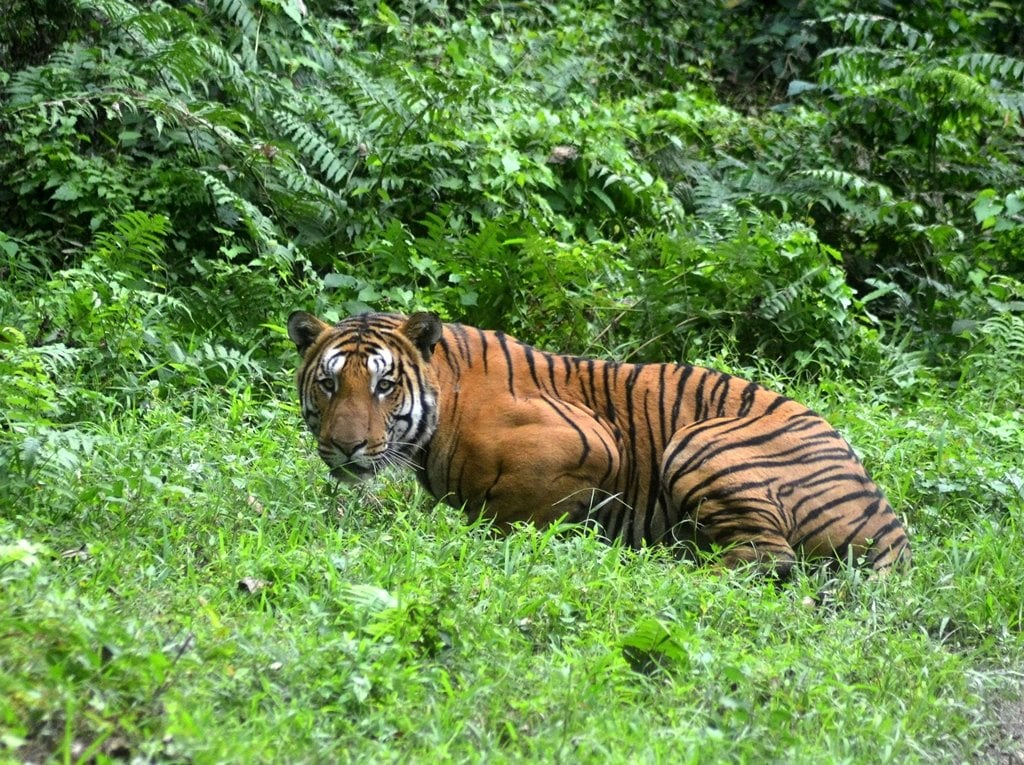
NEW DELHI: India, home to most of the world's wild tigers, on Tuesday reported a 30% jump in the animal's numbers in a rare piece of good news for conservationists.
A census found 2,226 tigers in India last year compared with 1,706 in 2010, officials in New Delhi announced, with most of the beasts individually identified around the country.
Environment Minister Prakash Javadekar hailed the rise as a "huge success" as India battles to save the endangered big cats from poachers and smugglers as well as destruction of their natural habitat.
"While the tiger population is falling in the world, it is rising in India. We have increased by 30% from the last count. That is a huge success story," Javadekar said at the release of the census.
The minister cited improved management of India's more than 40 tiger reserves, which are spread from the northeastern state of Assam and western Rajasthan to central Maharashtra.
He said the government was working to reduce deadly encounters between tigers and people, as farmers and others encroach on forest land and the cats leave reserves to search for water and food.
Some 9,700 hidden cameras were used in known tiger habitats to take photos of the animals for the count. Officials said some 70% of the tigers were snapped and individually identified using computer software.
Conservationist Belinda Wright said the methodology used was "scientifically robust" with officials, NGOs and others involved in surveying the animals over a 300,000-square kilometre (115,800-square mile) area.
"The information (in the census) is as accurate as you can get. So it's very good news for the tigers," Wright, from the Wildlife Protection Society of India, told AFP in Delhi.
"The loss of wildlife corridors for tigers is a big concern at the moment as the land is increasingly used for development," she added.
"Hopefully this will send a signal to the new government (of Prime Minister Narendra Modi) to protect these corridors" as tigers are known to move from one reserve to another.
More than half of the world's rapidly dwindling wild tiger population lives in India, but the country's conservation programme has been working to halt their decline.
Numbers have been rising since they hit 1,411 in 2006, but the current population still remains a long way off 2002 when some 3,700 tigers were estimated to be alive in the country.
There were thought to be around 40,000 tigers in India at the time of independence from Britain in 1947.
Authorities across Asia are waging a major battle against poachers, who often sell tiger body parts to the lucrative traditional Chinese medicine market, as well as other man-made problems such as habitat loss.
Thousands of tribal people were allegedly evicted from a tiger reserve in India's central Madhya Pradesh state last year in an attempt to better protect the animals.
An indigenous rights group has claimed the 3,000-odd people were neither resettled nor adequately compensated for the loss of their ancestral lands.
COMMENTS (5)
Comments are moderated and generally will be posted if they are on-topic and not abusive.
For more information, please see our Comments FAQ


































































@Shabbir: You said it best. Wildlife go beyond boundaries and are the last vestiges of God's creations in natural environs while everything else is staged or managed.
This shows the countries maturity and robust administrative system which can protect the wild animals, that means they have huge dense jungles which will help their county eco system in may ways...!!
@Karachi : thanks for the appreciation. Wildlife is our human kinds's shared heritage. Along with other things, social habits need to change in china to stop consuming Tiger, Bear, Rhino and Elephant parts for the whole thing to turn around.
Great news!
Well done India!